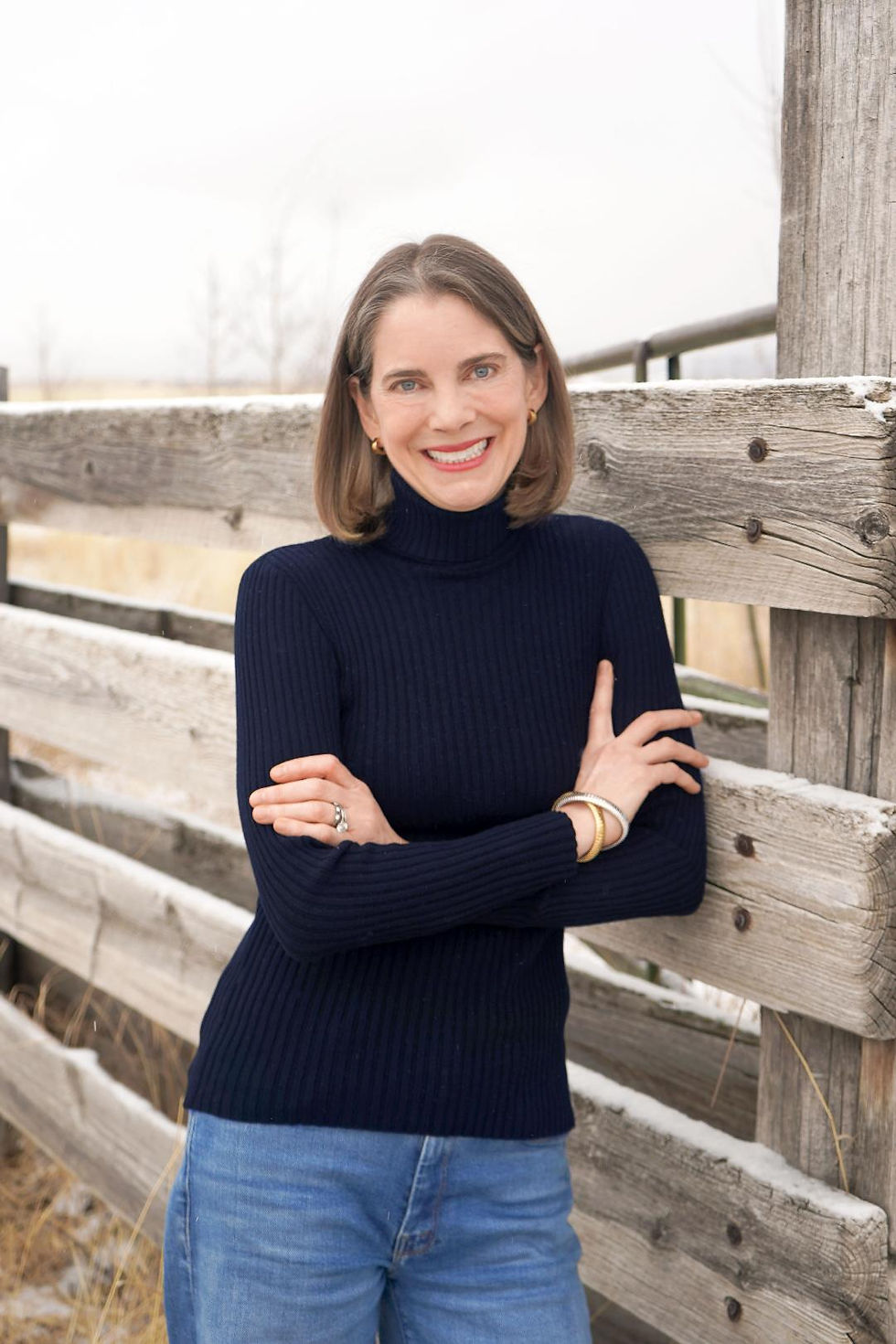Reay’s Newest Book Is Work of Art
- David A.F. Sweet
- Jul 21
- 4 min read
Updated: Jul 23
By David A. F. Sweet It is estimated that at least 20 percent of artwork in museums – even at the best ones in New York and London – are forgeries. It’s a shocking statistic when first confronted, and I was astounded when author Katherine Reay shared it during her scintillating talk recently in Lake Forest. But she should know. Her latest work of historical fiction, The English Masterpiece, is about a forged Picasso identified by the narrator, Lily Summers, during an exhibition after the great artist’s death at the Tate Gallery in London in 1973. Reay is a master of details, even those from more than half a century ago.

"The biggest challenge was keeping the cat-and-mouse game going while the reader has knowledge that Lily does not," said Katherine Reay, referring to the main character in The English Masterpiece. “Everything is checked,” said Reay, a former Lake Forest resident who now lives in Pray, Mont. “I even did the research to talk about ultrasuede as a new fabric -- that was the first spring it came out. Checking the details might be 10 percent of the time I work on a book. At the end, I look up little details if I don’t remember putting them in.” Ensuring details are correct means engaging in plenty of research, and not just via the Internet. Reay traveled to London, where she once lived. “The most fun, which sounds strange, is I got to spend the morning with a man who was part of Lloyd’s of London,” Reay said. “It put the book into context in time. Insurance for art in the 1970s wasn’t its own classification. And going into the archives of the Tate was amazing. It was about a third of the size back then. I wanted to know what exhibits were there at the time.” The fun in England did have limits, such as when museums and libraries all around Europe suffered a cyberattack in 2023. “The British Library was offline for a month,” Reay recalled. “I had to use old-fashioned microfiche.” In the book – one of a dozen novels Reay has crafted, with the last four focused on historical fiction – Lily is a young, rising star at the Tate until she blurts out that the painting Woman Laughing is a forgery in front of its owner, a Times of London critic and others. All are aghast – and no one believes her assessment.

Reay has written almost a book a year since starting her career in 2011. “Forgers copy paintings, but they also make up paintings. Woman Laughing was just the style of a Picasso,” Reay said. “An expert might look at a forgery and say, ‘Yes, Matisse could have done that. His style may have been evolving.’” Lily’s career seems shattered, rumors of a worldwide forgery ring are sparked and, without giving away the plot and ending, numerous twists follow. The biggest challenge Reay faced in writing the book?
“The reader knows information before Lily does,” she said. “So the biggest challenge was keeping the cat-and-mouse game going while the reader has knowledge that Lily does not. The characters needed to be complex, because you still wondered what they would do and how they would feel about what they did.” Reay noted there are recurring themes in her novels. “Self-definition in finding one’s voice is one,” she said. “Forgiveness is often a theme. It’s paramount in our lives. For this book, I think integrity is a theme. And family reconciliation.” Reay’s next book, which is slated to appear in the next 18 months, will draw on a spy theme that has imbued other works. The protagonist comes out of World War II with a love for mystery novels and thinks her next-door neighbor in Oxfordshire is a spy. As I wrote about Reay in 2022, growing up in Atlanta (on occasion a “y’all” will pepper her speech), she loved Jane Austen’s works, the fantasy books of Lloyd Alexander and the mystery genre – including Encyclopedia Brown – all of which have influenced her fiction. After attending high school in East Lansing, Mich., she headed to Northwestern University, where two professors taught her how to make every word count and how to structure a large work. After she earned a Bachelor of Arts degree in history, she stayed at the school to procure a Master of Science degree in marketing. Ironically, Reay finds it hard to promote her works.
“It’s tough for me because I’m the brand,” she said. “I could promote a widget because it’s a widget. But this is so personal in many ways. I love meeting with readers and book clubs, but social media is more challenging.” After a novel is written, Reay often panics because she doesn’t know if she’ll ever come up with another idea for a book. Fortunately for her readers, they keep appearing. After all, as she notes, “I think in books. I always have.” This article first appeared in Classic Chicago magazine.





